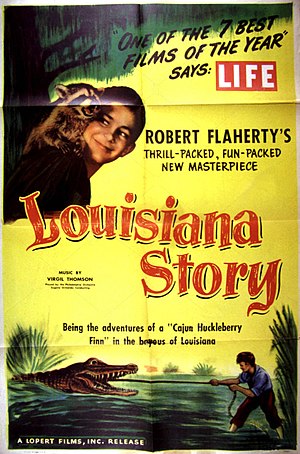| Display title | Louisiana Story |
| Default sort key | Louisiana Story |
| Page length (in bytes) | 1,421 |
| Namespace ID | 0 |
| Page ID | 457709 |
| Page content language | en - English |
| Page content model | wikitext |
| Indexing by robots | Allowed |
| Number of redirects to this page | 0 |
| Counted as a content page | Yes |
| Number of subpages of this page | 0 (0 redirects; 0 non-redirects) |
| Page image |  |
| Edit | Allow all users (infinite) |
| Move | Allow all users (infinite) |
| Delete | Allow all users (infinite) |
| Page creator | Robkelk (talk | contribs) |
| Date of page creation | 21:33, 3 April 2019 |
| Latest editor | Robkelk (talk | contribs) |
| Date of latest edit | 22:14, 2 October 2020 |
| Total number of edits | 6 |
| Recent number of edits (within past 180 days) | 0 |
| Recent number of distinct authors | 0 |
Description | Content |
Article description: (description)
This attribute controls the content of the description and og:description elements. | Like his previous films Nanook of the North, Moana, and Man of Aran, Robert Flaherty's Louisiana Story is a portrait of an isolated community: here, the Cajuns of the Louisiana bayous. In 1944 Standard Oil commissioned Flaherty to make a film depicting the difficulties of extracting oil, and in his usual style, he told his story from the perspective of a single family. The conflict between personal ownership and corporate enterprise is mediated and eventually resolved through the efforts of the Cajun family's young son (Joseph Boudreaux). As in his previous films, Flaherty shot not a real family, but one assembled from local inhabitants.[1] The film's extended nature sequences are considered among Flaherty's greatest examples of his talent for creating beautiful and stirring images. |
